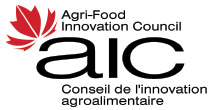Collaboration and Partnerships
Cross-sectoral collaboration, within the agri-food innovation system, needs to be encouraged and fostered. It will improve knowledge transfer and help build consensus on key issues.
Background
The agri-food innovation system consists of a wide-range of industries and stakeholders within and across the private and public sectors. It also does not function in isolation: its activities are closely related to other sectors from robotics and AI to forestry and natural resources. It involves and impacts different segments of the Canadian population including underrepresented but essential groups such as indigenous people, women and newcomers.
The intersectionality between the different sectors is also reflected by the multiplicity of stakeholders, including government departments, that play a role. Research can be funded by different federal departments and agencies as well as provincial departments and agencies along with private funds.
As an example, the development of new automated equipment on farms requires the involvement of various players at federal, provincial, municipal, academic, and business levels. The federal government has a role in incentivizing the development of such technologies but as they transcend multiple sector (agriculture, robotics, artificial intelligence, etc.) different departments and funding agencies can be involved (Agriculture and Agri-Food Canada, Industry Canada, Transport Canada, National Research Council, the Tri-Councils, etc.). Provincial governments also have funding mechanisms in this case but will also be involved in terms of policy development – and so will municipalities as these new machines may require access to the road system. On the private side, technology startups, SMEs and large multinationals also play a critical role in bringing innovations to market and supporting uptake via access to broadband networks for example.
Getting all the players involved in policy making is crucial.
There are opportunities for consultative, collaborative, sound, evidence-based and proactive policy development in agri-food research and innovation to support Canada’s growth objectives. Climate change is a perfect example of an issue where agri-food research and innovation can play a key role and requires the involvement of many players – from environment, natural resources, agri-food, etc.
Conventional strategies and current structures of economic development can be reviewed to seize the opportunity and break down the sector-specific approaches which may inhibit growth by creating silos of knowledge and information that lead to gaps in understanding.
Fostering relationships between farmers and producers, entrepreneurs, researchers, governments and consumers can better enable knowledge transfer which will speed up the adoption of new technologies.
To support the growth of the sector and ensure a more efficient flow of information, more collaboration is needed within the agri-food system, including within the government and across related sectors and segments of the population.
AIC’s Position
AIC recommends that, as an example, the federal government support an annual forum that brings together all the key players relevant to the agri-food sector, to discuss issues related to research and innovation.
The forum, to be co-chaired by government and industry should look at capturing opportunities for cooperation and recommend concrete and tangible actions.
The forum should also be able to discuss and make recommendations on:
- Risks,
- Challenges,
- Opportunities,
- Priorities,
- Setting bold and ambitious targets,
- Mechanisms to drive collaboration,
- Funding.
